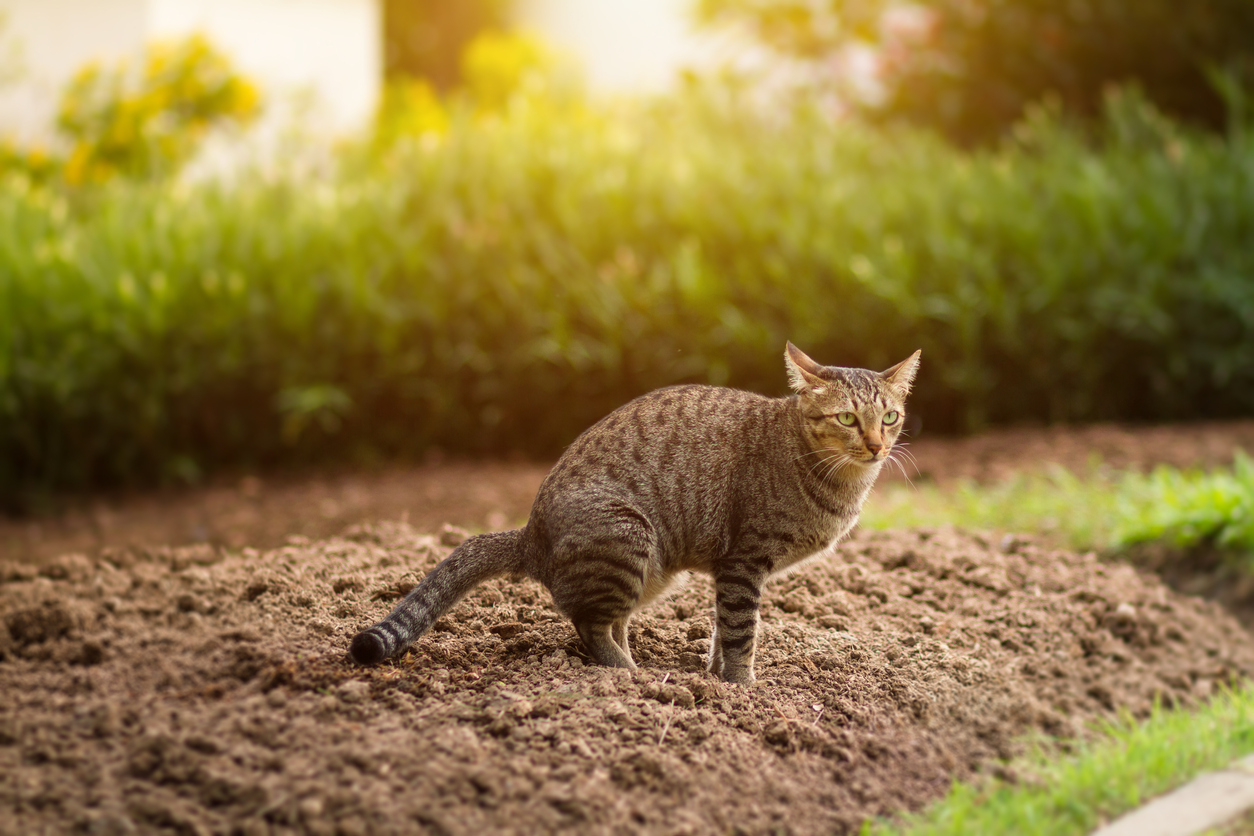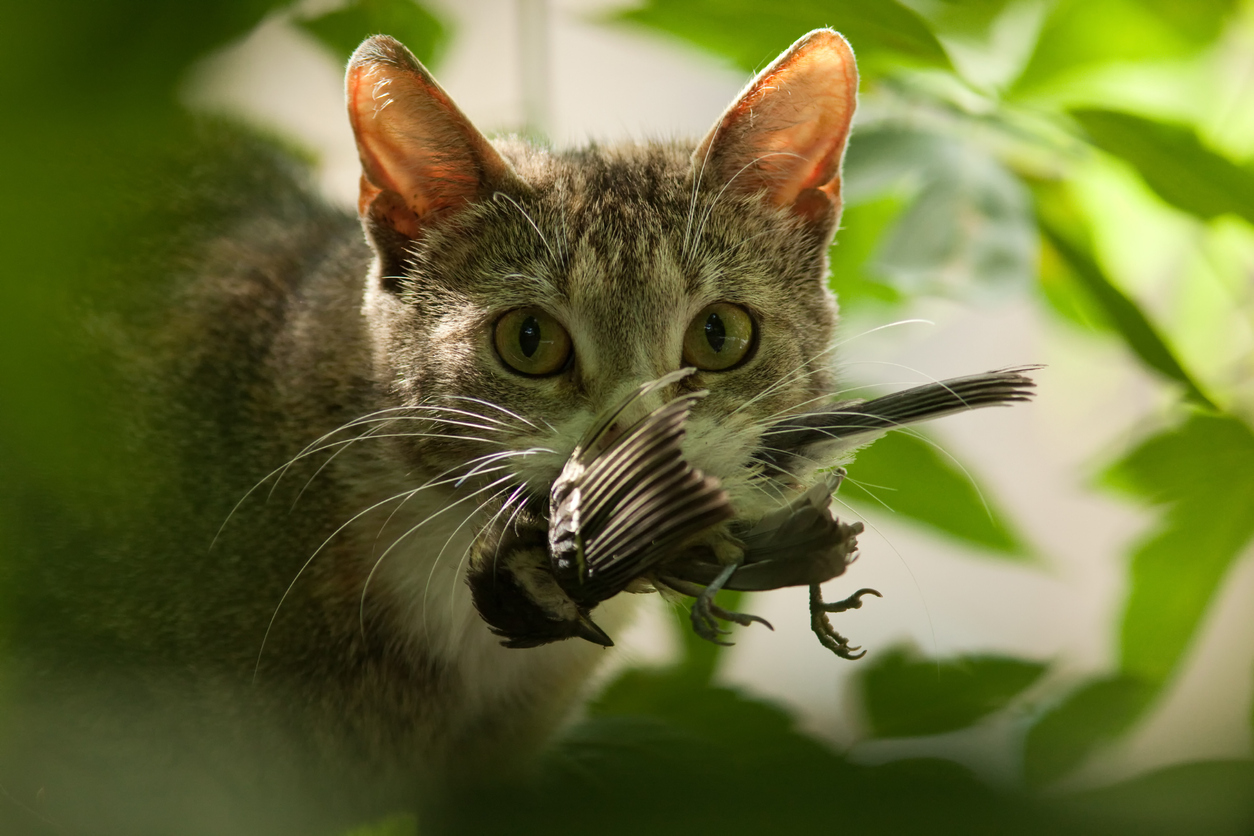
Cats, turds and birds
Keep cats indoors for the sake of your garden and the birds

Cats are the perfect indoor pet. Affectionate and curious, they make great companions. Give them a toy and they will amuse you with their antics. Nothing is nicer than a purring feline welcoming you home after a long day at work.
However, cats that roam outdoors can cause problems for gardeners and birds. They are voracious hunters of birds and may use gardens as a litter box.
Allowing cats to roam isn’t just bad for gardeners and birds, it’s bad for cats too. Free roaming cats are exposed to all kinds of risks including vehicle accidents, aggression from other animals (including other cats), and infectious diseases and parasites.
Impact on Wildlife and Human Health
According to a 2013 study, cats are the number one killer of birds in Canada, killing a staggering 300 million birds per year. Birds are on the front line when it comes to insect control. ScienceDaily reports that birds around the world are estimated to eat 400 to 500 million tons of insects every year. A healthy population of birds is important to garden eco-systems. Their appetite for insects, especially larvae and pupae especially when they are feeding their nestlings, naturally keeps pest insect populations in check.
Cat turds (feces) are a serious soil contamination problem, especially if they choose your vegetable garden as a litter box. Cats shed a parasite called toxoplasmosis in their feces, which can cause serious health problems for pregnant women and people with compromised immune systems. Their feces may also contain roundworm, hookworm, E. coli and/or salmonella, all of which can cause serious illness.
How to Help Your Garden
- Wear gloves and remove the turds (feces) and as much of the soil as you can as soon as possible.
- Remove any vegetables growing near the contaminated soil.
- Dispose of the soil and plants in the garbage, not the compost.
- Disinfect any tools used in the garden with isopropyl alcohol, hand sanitizer or Lysol. Disinfect your gloves and boots too, well away from the garden area.
- Do not plant root vegetables (carrots, beets, potatoes, parsnips) or any leafy greens that are eaten raw (lettuce, chard, kale) in soil that was heavily used by a cat.
Cats prefer soft, dry soil for digging and are attracted to bird baths and bird feeders. There are some things you can do to deter them from using your garden as a litter box.
- A thick layer of woody mulch (at least 4”) over bare soil in your garden will discourage digging.
- Cover plants with floating row covers to prevent access to the soil.
- Chicken wire is an effective deterrent when laid over bare soil.
- Cover unused raised beds with a tarp or wooden panel when not in use - same goes for children’s sand boxes.
- Motion activated sprinklers can deter cats.
What to Do About Cats at Large
Just like dogs, most municipalities have bylaws that require cats to be licensed and are not allowed to roam at large. Responsible cat owners give their kitties outdoor time supervised on a leash or in a “catio” (enclosed outdoor area) and create indoor play activities to keep them entertained and give them exercise. If a cat at large is a problem, contact your local Humane Society, SPCA, Animal Shelter or the pound.
Feral cats, however, are an even greater concern, as they rely on hunting for sustenance and their populations multiply quickly if left unchecked. If a feral cat is living in your garden or yard, contact your local Animal Shelter, Humane Society or SPCA for help finding local programs that trap and neuter feral cats
Frequently Asked Questions
Q: My cat Herman is an escape artist and I have a hard time keeping him indoors. I put a bell on him, but he still comes home with dead birds. What should I do?
Sources
Birds eat 400 to 500 million tons of insects annually: Along with spiders, insectivorous birds play a vital role in consuming insects that would otherwise destroy forests or crops. (n.d.). ScienceDaily. Retrieved 9 August 2022, from https://www.sciencedaily.com/releases/2018/07/180709100850.htm
Calver, M., Thomas, S., Bradley, S., & McCutcheon, H. (2007). Reducing the rate of predation on wildlife by pet cats: The efficacy and practicability of collar-mounted pounce protectors. Biological Conservation, 137(3), 341–348. https://doi.org/10.1016/j.biocon.2007.02.015
Calvert, A., Bishop, C., Elliot, R., Krebs, E., Kydd, T., Machtans, C., & Robertson, G. (2013). A synthesis of human-related avian mortality in Canada. Avian Conservation and Ecology, 8(2). https://doi.org/10.5751/ACE-00581-080211
Cats in the garden! What to do? (n.d.). University of California, UCCE Master Gardener Program. https://acmg.ucanr.edu/files/214548.pdf
Chaudhry, S. A., Gad, N., & Koren, G. (2014). Toxoplasmosis and pregnancy. Canadian Family Physician, 60(4), 334–336. https://www.cfp.ca/content/60/4/334
How birds keep our world safe from the plagues of insects. (1995, January 1). Smithsonian’s National Zoo. https://nationalzoo.si.edu/migratory-birds/news/how-birds-keep-our-world-safe-plagues-insects
Loyd, K. A. T., Hernandez, S. M., Abernathy, K. J., Shock, B. C., & Marshall, G. J. (2013). Risk behaviours exhibited by free-roaming cats in a suburban US town. The Veterinary Record, 173(12), 295. https://doi.org/10.1136/vr.101222

